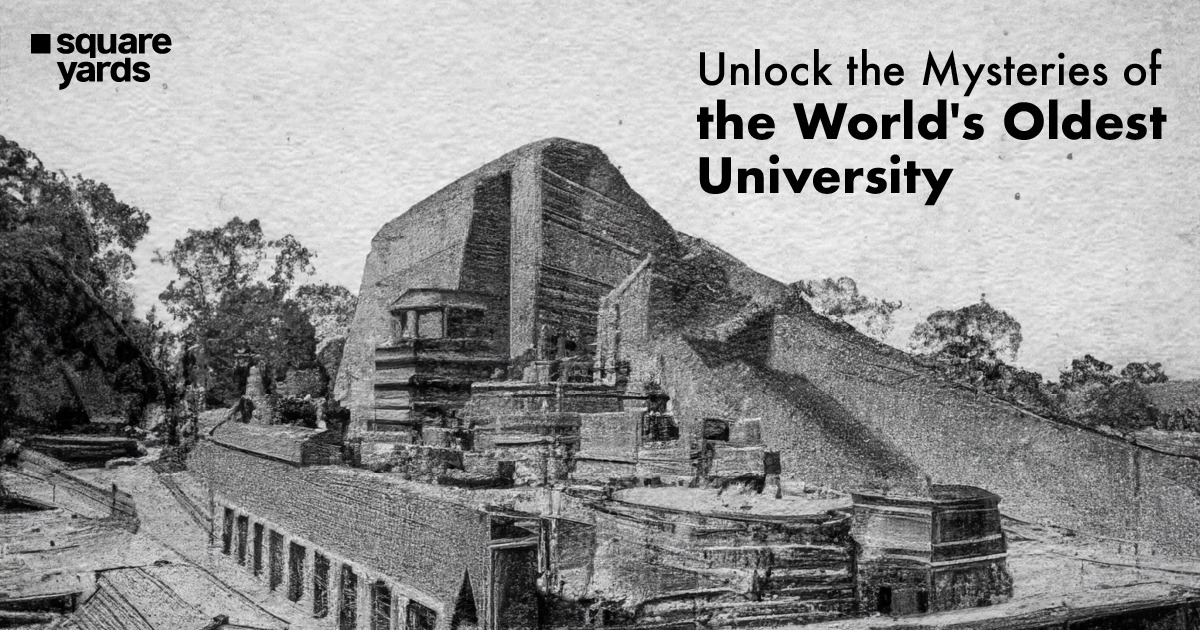Whenever there has been an attempt at cultural genocide, the bearers of the first attack have been the education sector. Prior to the French aggression in Vietnam, the British attack in India and more recently, Chinese actions in Tibet, the first step to cultural genocide has always been burning the tomes of wisdom, the educators and tainting the curricula of the region. Even today, important chapters of history and political science are being torn and thrown into the fire of oblivion, trying to make the younger generation forget about the colossal mistakes the society has made. One such incident took place years ago. An Afghan ruler attempted to eradicate the secrets of medicine, literature, alchemy, and grammar from the books and the texts betrothed to several students from across the world, grouped in India.
A long time ago, upon tearing a page from the inscription of Indian history, a university possessing knowledge of all was found. Students from all over the world came to study the deep secrets of science and art. Buried in books in what once was the biggest library on the planet, these students possessed knowledge of everything under the sun. Before Oxford, Bologna, and Cambridge made their name in the list of the oldest universities in the world, India had throned a centre so powerful that multiple attempts to crumble the once-proud pillar of knowledge defeated those before succumbing to the showdown.
Nalanda University was the first university in the world. A Buddhist Monastic university, Nalanda survived for over 700 years before meeting its fate with fire under the attack of Bakhtiyar Khilji. This article is a journey from the establishment to the ruins of Nalanda.
Chapter 1: History
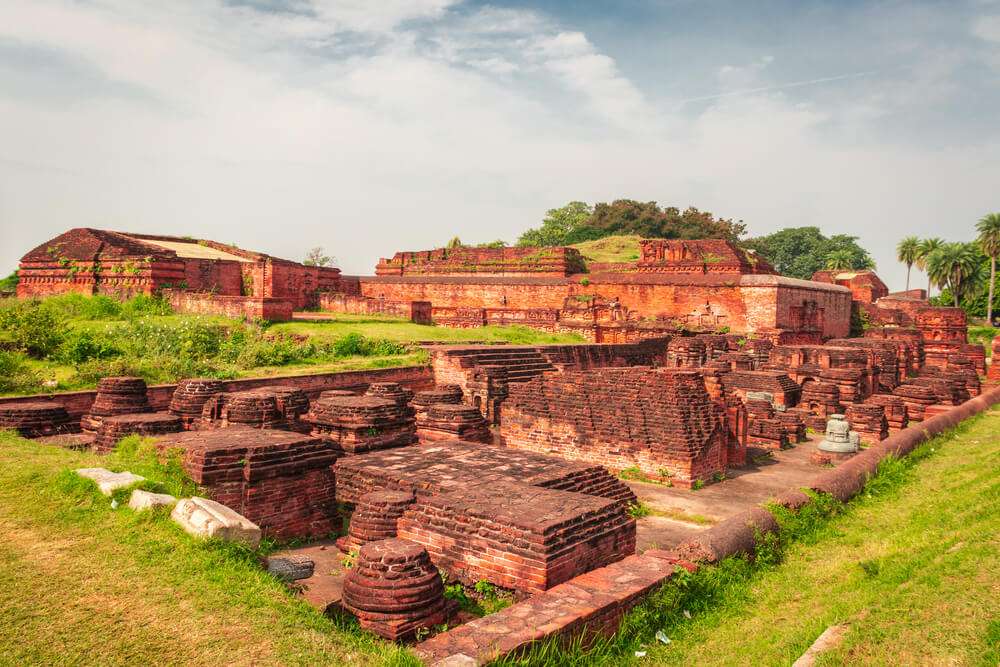
The inception of Nalanda University can be traced back to the 5th century BCE during the reign of the Gupta dynasty. Initially established as a Buddhist monastery and centre of learning, over the centuries, it evolved into a renowned centre for education and intellectual exchange. Nalanda attracted scholars and students from all over India and the world, including China, Tibet, Korea, and Central Asia. Nalanda reached its zenith during the Gupta and Pala dynasties. It was a hub for studying various subjects, including Buddhist philosophy, mathematics, medicine, logic, and the arts. The university’s library, known as the “Dharmaganja” or “Treasury of Truth,” was one of the largest and most thorough libraries of the ancient world, housing more than 9 million manuscripts and texts.
Nalanda was home to countless prominent scholars, such as Nagarjuna, Aryabhata, and Dharmapala. The university was crucial in developing and spreading Buddhist philosophy, culture, and other academic disciplines. Despite its illustrious history, Nalanda faced a decline in the 12th century due to various factors, including invasions by Turkic rulers, including Bakhtiyar Khilji, who is often associated with the destruction of the university in 1193. It is said that the library was set on fire, resulting in the loss of numerous valuable texts and manuscripts. Nalanda University lay in ruins for centuries, but its historical significance was never forgotten.
Chapter 2: Architecture of Nalanda
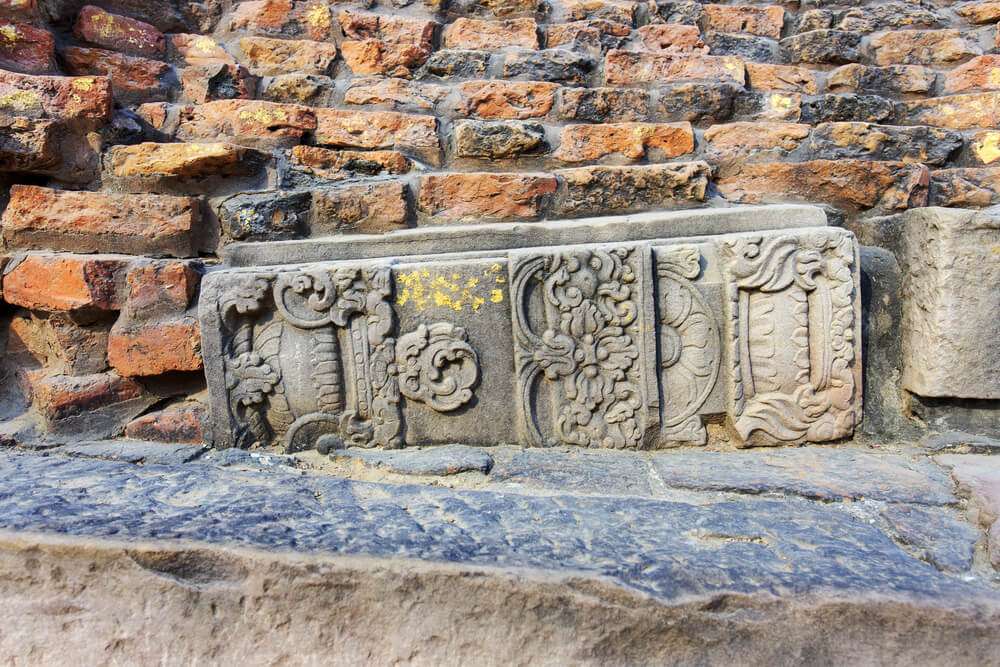
Nalanda University is an exemplar of architectural virtuosity. The university had high walls and wide gates. Nalanda was a collection of courtyards, temples, educational and residential viharas, classrooms, a library, and meditation halls. The compound of Nalanda University was sprawling with stupas. Ashoka made a significant contribution to the construction of stupas in Nalanda. The walls of stupas, viharas and temples are adorned with several motifs of flowers, animals, monks meditating, Buddha giving sermons to the public, and so on. After the excavation, it was found that the main material used at that time was red bricks. One of the biggest attractions of Nalanda University was its library.
Chapter 3: The Library
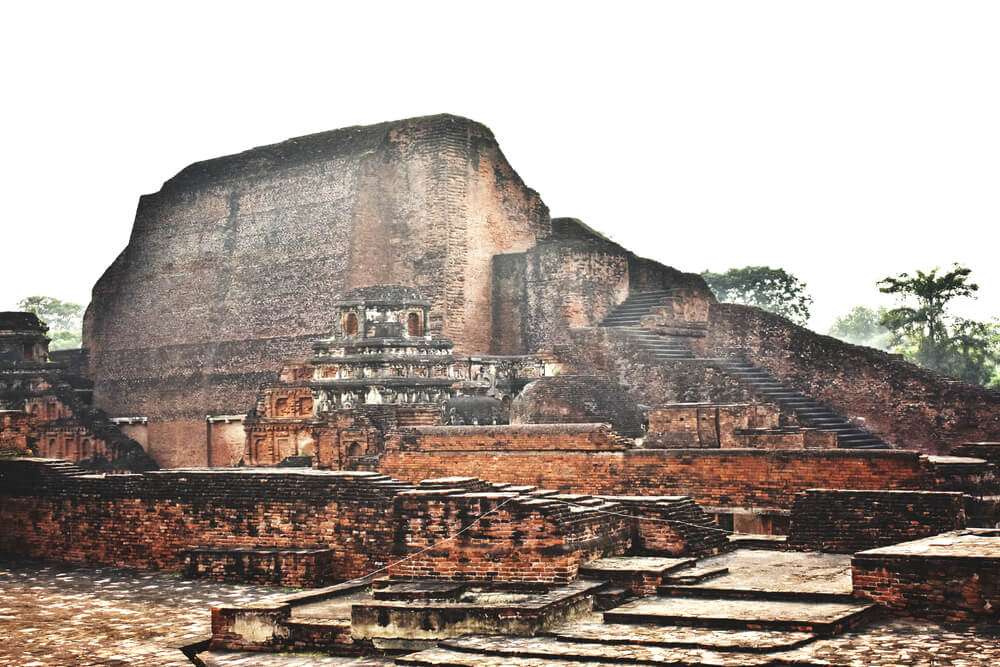
In the times when libraries are an aesthetic Instagram background, talking about the world’s once biggest centre of knowledge could be in vain. However, Nalanda University’s library is intriguing for those still looking for a haven amongst books. The nine-floor tall library was also called Dharmaganj. It is said that knowledge was such a wistful wanderer in the compound of Nalanda that the gatekeeper could be quizzed on any subject that found its home in the library.
Yijing’s extensive collection of texts acquired during his decade-long stay at Nalanda vividly attests to the presence of a well-equipped library at the Mahavihara. Dharmaganja comprised three imposing multi-storeyed structures: Ratnasagara (Ocean of Jewels), Ratnodadhi (Sea of Jewels), and Ratnaranjaka (Jewel-adorned). The Ratnodadhi, in particular, stood out with its nine stories and served as the repository for the most sacred manuscripts, including revered texts like the Prajnaparamita Sutra and the Guhyasamaja.
Whenever a Buddhist scholar at Nalanda passed away, their manuscripts were thoughtfully incorporated into the library’s extensive collection, ensuring a continuous expansion of its wealth of knowledge. Remarkably, this repository didn’t limit itself to religious texts alone; it also amassed a diverse range of subjects, encompassing grammar, logic, literature, astrology, astronomy, and medicine.
Chapter 4: The Genocide of Texts
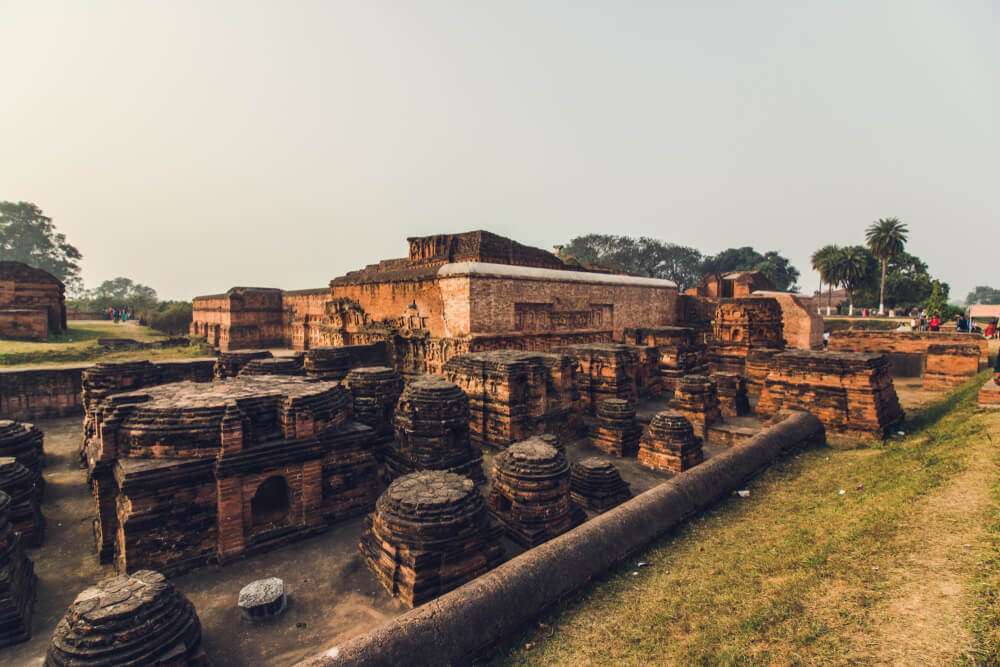
One of history’s biggest mysteries is why Bakhtiyar Khilji was motivated to destroy Nalanda University. A strange account of his motivation was that he was blinded by ego and jealousy. It is said that Khilji fell seriously ill, and no treatment from his hakims was helping him. Upon someone’s advice, he called a vaidya from Nalanda University. Khilji refused to consume any Indian medicine, and if he didn’t feel better, he would put him to death. The vaidya gave Khilji the Quran and asked him to read it every day. He had laced the pages of the Quran with a medicinal paste, which helped Bakhtiyar get better. Upon learning that he had consumed medicine from the vaidya, Khilji got agitated and set fire to the University. He massacred several monks. This was one of the first attacks of Afghans in India. The Library burnt continuously for three months. Whatever remains of Nalanda today is a testament that history cannot be buried in the heat of jealousy, war and hatred.
Chapter 5: The Beginning of an End
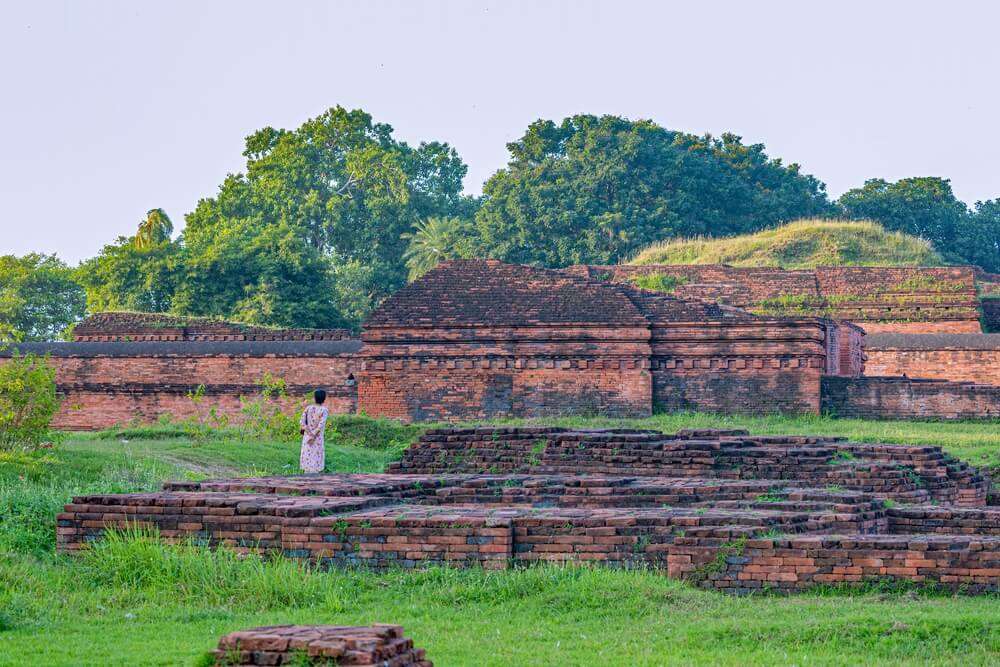
The education system in India had a more practical take than it has now. Classic institutions like Nalanda University pushed limits to space by talking about subjects like astronomy, alchemy, and literature at a time when religion was the only text people preferred to read. The 10,000 students of Nalanda and over 2000 teachers actively participated in learning activities, unlike the current scenario where teachers and students dread learning or where learning is just for the sake of earning academic validation. We might never know what was in the exquisitely composed texts found in the library of Nalanda. But we know this much that history is bound to repeat. From reading in the books of history about various destructions due to jealousy and hatred to reading about today’s dated newspaper, we surely have met all the requirements of a civil, evolving society.


